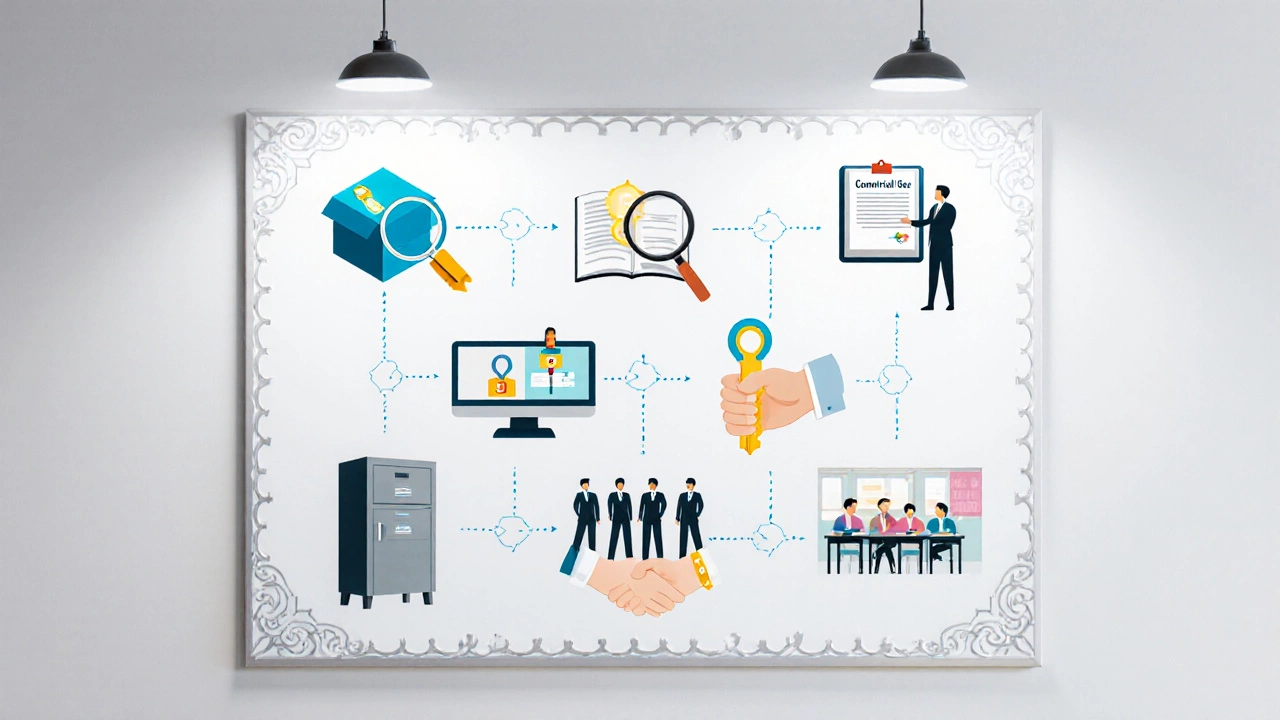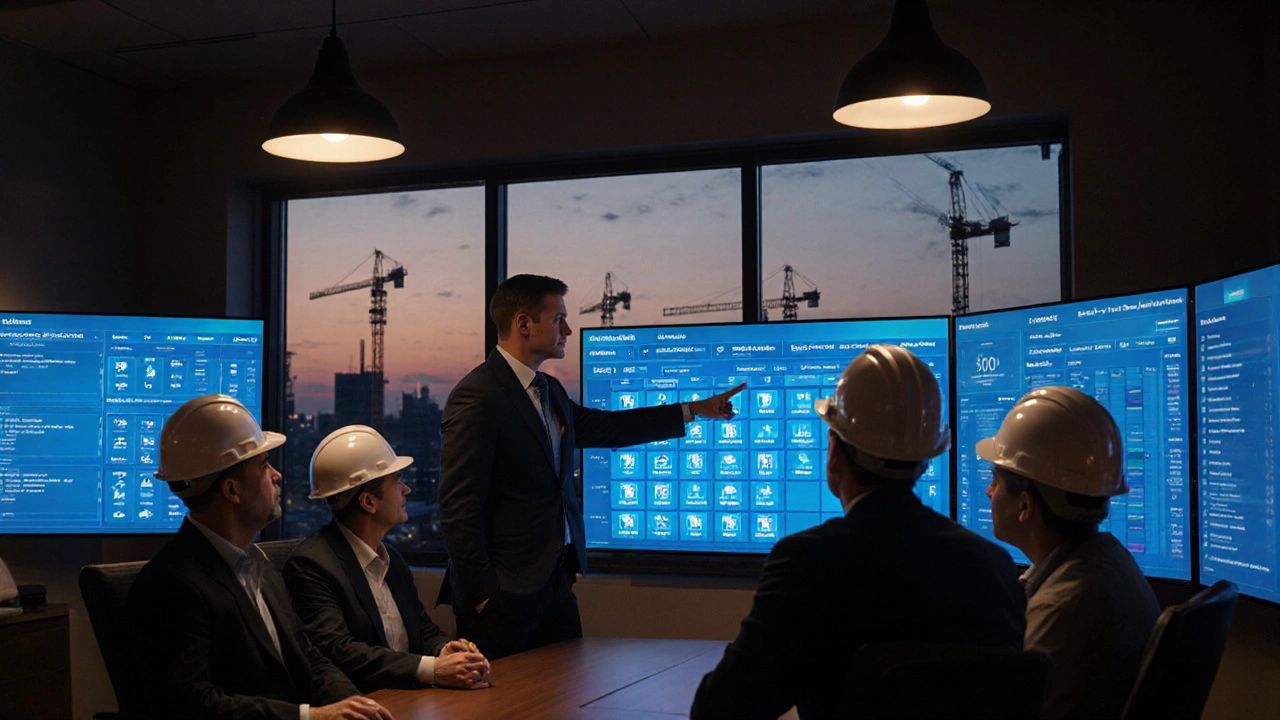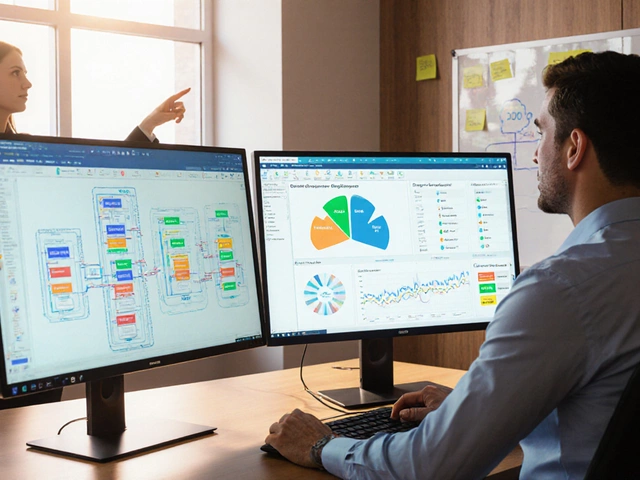Commercial License Checker
License Recommendation
Recommended License Type
Key Features
Important Considerations
Personal License
For individual, non-commercial use only
Commercial License
For profit-generating business activities
Enterprise License
For large organizations with multiple users
When you hear the term Commercial License is a legal permission that lets a business use, distribute, or modify a product-often software-outside of personal or non‑profit contexts, you might wonder what that actually means for your project. In plain English, a commercial license is the green light you need to run a tool in a profit‑making setting without breaking the law. Below, we break down the concept, when it matters, how to get one, and what to watch out for.
Key Takeaways
- A commercial license grants businesses the right to use a product for profit‑generating activities.
- It differs from personal, academic, and enterprise licenses in scope, price, and compliance obligations.
- Obtaining a license usually involves reviewing the vendor’s agreement, negotiating terms, and keeping proper records.
- Non‑compliance can lead to fines, forced shutdowns, or costly lawsuits.
- Use our checklist to stay on track and avoid common pitfalls.
What Exactly Is a Commercial License?
Think of a license as a contract between the Software Vendor (the creator) and the entity that wants to use the software. The vendor says, “You can do X, Y, and Z, but only if you pay and follow these rules.” When the contract is meant for business use, it’s called a commercial license.
Two other common license flavors pop up in the conversation:
- Personal License allows an individual to install and use the product on a personal device, usually for non‑commercial activities.
- Enterprise License is a bulk agreement that covers an entire organization, often with added support, customization, and volume pricing.
The key difference is who’s benefiting financially. If the tool helps you earn money-whether you’re a contractor, architect, or a SaaS provider-you need a commercial license.
Why a Commercial License Matters for Your Business
Skipping the license or using the wrong one can bite you in several ways:
- Legal compliance: Regulatory Agency oversight, such as the U.S. Copyright Office, enforces proper licensing. Violations can attract fines ranging from a few thousand dollars to six‑figure penalties.
- Liability protection: A valid license often includes indemnification clauses that protect you if the software’s code infringes on third‑party patents.
- Access to updates and support: Vendors typically reserve critical patches and technical help for licensed commercial users.
- Reputation: Clients in construction and architecture expect you to follow licensing rules; a breach can damage trust and hurt future bids.
In short, a commercial license is part of the risk‑management toolbox for any Business Entity that relies on third‑party tools.
Step‑by‑Step Guide to Getting a Commercial License
- Identify the vendor and product. Review the product’s website or documentation to confirm that a commercial tier exists.
- Read the license agreement. Look for sections titled "Commercial Use," "Distribution," or "Resale". Pay attention to usage limits, seat counts, and geographic restrictions.
- Assess your needs. Estimate the number of users, devices, and any redistribution plans. This will shape the pricing model.
- Negotiate terms if needed. Larger construction firms often negotiate volume discounts, extended support windows, or custom clauses about data ownership.
- Purchase and receive the license key. Most vendors provide a digital key or online portal access after payment.
- Document the agreement. Store the signed agreement, invoice, and license key in a centralized compliance system. Include expiration dates and renewal reminders.
- Train your team. Ensure that all users understand the permitted uses and any reporting requirements.
Following these steps keeps you on the right side of Copyright Law and reduces the risk of an audit.

License Types at a Glance
| Feature | Personal License | Commercial License | Enterprise License |
|---|---|---|---|
| Allowed Use | Non‑profit, hobbyist, single user | Any profit‑generating activity | Organization‑wide, multi‑site deployment |
| Typical Cost | Free-Low | Medium-High (per seat or per usage) | Negotiated bulk pricing |
| Support Level | Community only | Standard vendor support | Premium, 24/7, dedicated manager |
| Update Frequency | Optional | Automatic or as‑released | Scheduled, with custom rollout |
| Compliance Obligations | Minimal reporting | License key management, audit trails | Full governance, reporting dashboards |
Common Pitfalls and Pro Tips
Even seasoned contractors stumble over licensing details. Here are the most frequent mistakes and how to avoid them:
- Assuming “free” means unrestricted. Some free tools include clauses that forbid commercial use. Always verify the “Free for personal use only” line.
- Sharing a single license key across the entire crew. Most commercial agreements tie the key to a specific number of seats. Exceeding that count can trigger penalties.
- Neglecting renewal dates. An expired license can halt access to critical updates, leaving you vulnerable to security bugs.
- Overlooking sublicensing rights. If you plan to bundle the software with your own services, you may need an additional sublicense clause.
- Skipping the License Agreement review. The fine print often contains limits on data export, geographic deployment, and liability caps.
Pro tip: Keep a “License Tracker” spreadsheet that logs product name, vendor, key, seat count, expiration, and contact person. Update it quarterly.
Compliance Checklist for Construction Professionals
- Identify every software tool used on a project (CAD, BIM, estimating, scheduling, etc.).
- Confirm each tool’s license type matches its use case (commercial vs. personal).
- Store signed agreements in a shared, read‑only folder with version control.
- Set calendar alerts 30 days before each license expires.
- Assign a compliance officer to audit license usage semi‑annually.
- Document any custom integrations and verify they’re covered by the original agreement.
- Maintain a record of all support tickets as evidence of active use.
Cross‑checking this list before a bid submission can save you from surprise compliance fees.
Real‑World Scenarios
Scenario 1 - Small remodel contractor: John uses a free version of a project‑management app to track job costs. The app’s terms state “free for personal use only.” Since John’s business earns revenue from the jobs, he upgrades to a commercial license, pays $15 per user per month, and now enjoys unlimited projects and priority support.
Scenario 2 - Mid‑size architecture firm: A firm adopts a BIM platform licensed per workstation. They start with 10 seats, then grow to 25. They negotiate an enterprise license that includes on‑site training and a dedicated account manager, saving $3,000 annually compared to buying 15 extra single seats.
Scenario 3 - SaaS provider for construction docs: The provider bundles a third‑party PDF viewer. The viewer’s standard commercial license forbids redistribution. The provider contacts the vendor, gets a custom sublicensing clause for $2,500, and avoids a potential lawsuit.
Bottom Line
If your work generates income, you need a commercial license. It shields you from legal trouble, unlocks support, and keeps your projects moving. Use the steps, table, and checklist above to make licensing a smooth part of your workflow rather than an after‑thought.

Frequently Asked Questions
Can I use a personal license for a client project?
No. A personal license is intended for non‑commercial, hobbyist use. When the output of the software is sold or used to earn revenue, the vendor requires a commercial or enterprise license.
What happens if I exceed the seat count on my commercial license?
Exceeding the agreed‑upon seat count is a breach of contract. Vendors may issue a penalty invoice, suspend access, or, in extreme cases, pursue legal action.
Do I need a commercial license for open‑source software?
Open‑source licenses (e.g., MIT, Apache) typically allow commercial use without a separate fee, but you must follow attribution and distribution rules. Some open‑source projects have dual licensing-one free for personal use and a paid commercial tier.
How often should I audit my software licenses?
A semi‑annual audit is a good baseline for construction firms. Larger organizations may prefer quarterly checks, especially after major project wins or staff turnovers.
Can I transfer a commercial license to another company?
Transferability depends on the vendor’s terms. Some agreements allow assignment with written consent; others tie the license to a specific legal entity and prohibit transfer.






